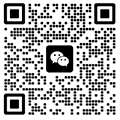

Basic Structure:
Standard Sentence: [Subject] + [Verb] + [Object]
"把" Sentence: [Subject] + 把 + [Object] + [Verb Phrase]
Why Use a "把" Sentence?
Standard Sentence: 我关了门。 (I closed the door.) -> Simply states a fact.
"把" Sentence: 我把门关了。 (I disposed of the door by closing it.) -> Emphasizes that the "door" was handled by me, resulting in it being "closed."
It emphasizes what the subject does to the object, and the change or result that happens to the object because of the action.
Comparison:
Rules for "把" Sentences (Crucial!):
Correct: 请把那本书给我。 (那本书 = that specific book)
Incorrect: 请把一本书给我。 (一本书 = any book, not specific)
Result complement: 我把作业做完了。 (I finished the homework.)
Directional complement: 请把椅子拿过来。 (Please bring the chair over.)
"了": 我把信寄了。 (I mailed the letter.)
A second object: 我把这本书送给他。 (I gave this book to him.)
Rule 1: The verb cannot be isolated; it must be followed by "something." For example:
Rule 2: The object must be specific. The listener needs to know which object is being "把-ed".
Summary: "把" Sentence = Subject + 把 + Specific Object + Verb (with result). Practice frequently to develop a feel for it.
Add:NO.151 Xidazhi Street,Nangang Strict,Harbin,Heilongjiang P.R. China,150001
BINCIA CHINESE COLLEGE

